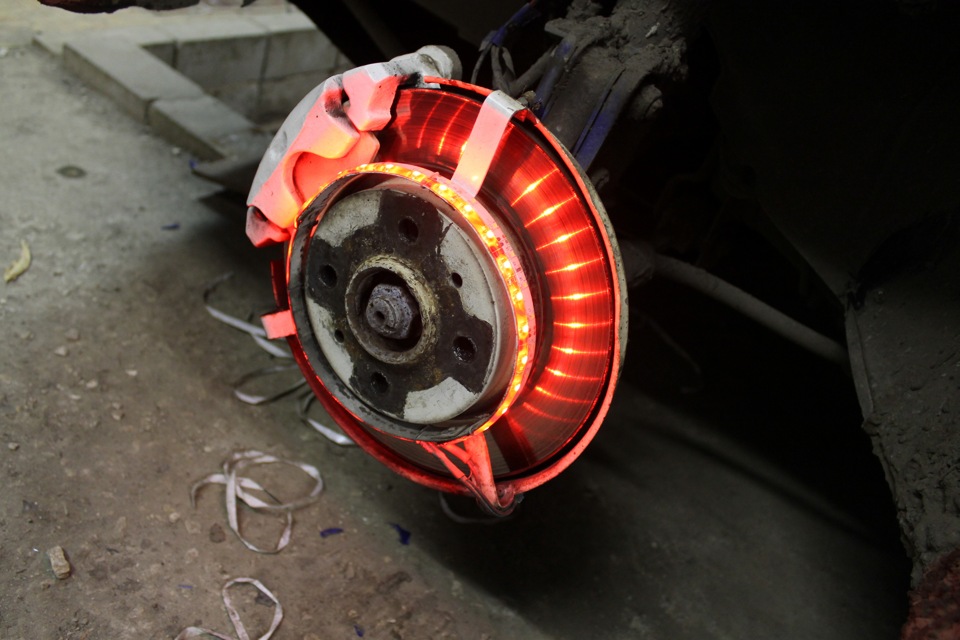
Which wheels are better to ride in winter: stamped, cast or forged
Content
Swapping seasonal tires for a regular set of wheels carries several inconveniences. These are the time and money spent on tire fitting, possible queues when all car owners change tires at the same time, as well as unwanted wear of rubber and disks with frequent dismantling.
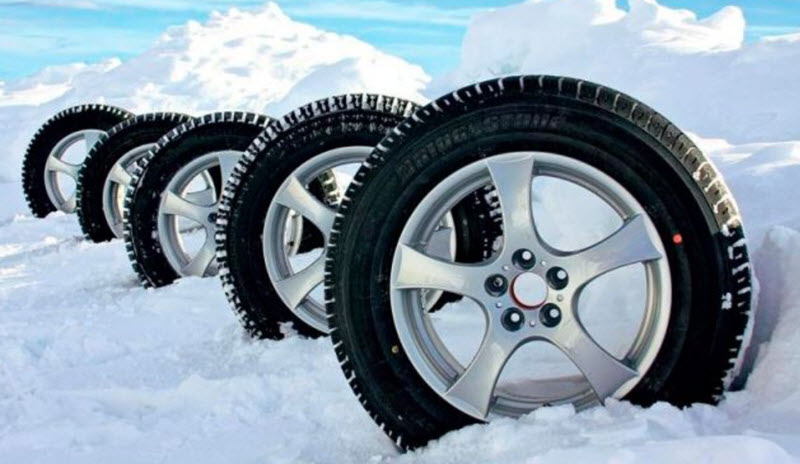
If you have relatively small financial resources, it is better to store the winter wheels as an assembly, but then you will need to choose a second set of wheels.
Differences between cast, forged and stamped wheels
Discs differ in manufacturing technology and materials. All this greatly affects the price and appearance of products, but there are also not so obvious differences that also require consideration. Moreover, it is mandatory, since it affects not only the wear of the material part, but also safety.
Classic steel wheels, made by stamping and welded from individual sheets. They have the largest mass, which reduces the dynamics of the car, both during acceleration and during braking. But the main thing is that the discs are part of the unsprung masses, which does not contribute to comfort and loads the suspension.
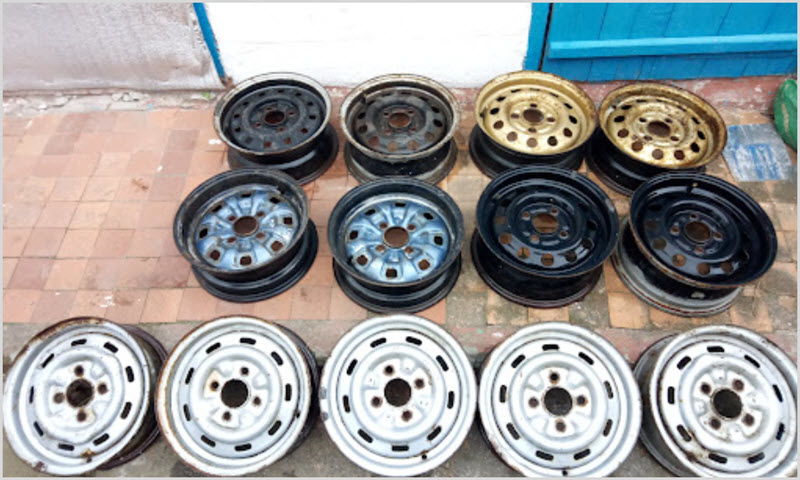
But they do not break upon impact, but only bend, which ensures maintainability, do not respond to temperature. Rust only when the integrity of the coating is violated. Decorativeness can be ensured only by using plastic caps. The cheapest to buy.
Alloy wheels made of aluminum and magnesium alloys. Noticeably lighter than stampings, stiffer and much better looking. Various in pattern, you can choose for every taste.

They also corrode, but are protected by varnish, and they are mainly afraid of winter road reagents. They are much more expensive, especially in repairs.
Wrought iron products are even stronger, lighter and more expensive. Good for sports, in civilian use, differences can only be noticed at a price.

There are more hybrid compound discs, but they can not even be considered for winter, these are expensive elite products.
Myths of operation of disks in the winter
The horror stories for casting and forging owners consist predominantly of the threat of brittleness at low temperatures and poor resistance to salt solutions.
The first can only affect in extreme frosts, when the very fact of driving a car is in question, and the second does not make much difference in manufacturing technologies.
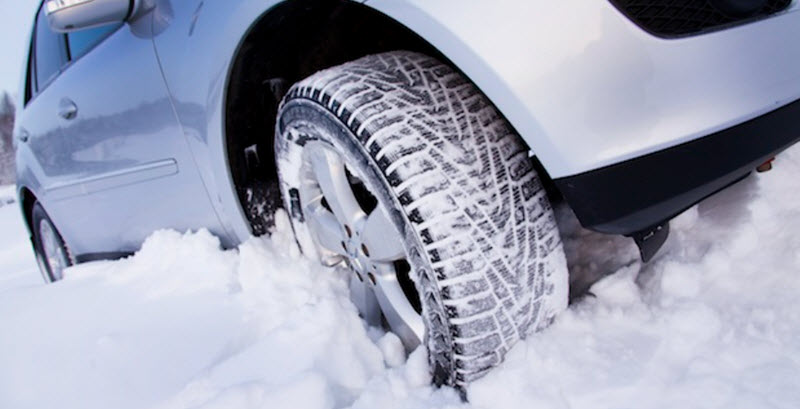
If the paintwork is damaged, then corrosion will eat up any disc, except for a composite one that is not used in civilian use.
Without touching on economic issues, we can say that there is not much difference in winter. Much more important is the "winter" choice of tire dimensions and their corresponding disks, an increase in the height of the profile, a decrease in the width and landing diameter. But there is still a preference.
Which wheels are better to ride in winter
Winter eliminates most of the benefits of casting and forging. On cold or icy asphalt, few people use the maximum dynamics of the car and high speeds, which are affected by handling and comfort characteristics.
But the economic factor of using disks is more noticeable:
- in winter it is easier to damage the disk, which will be much cheaper to repair or replace in the case of steel stamping;
- it is more reasonable to buy the second set of disks in the economy version, that is, with a smaller landing diameter, modest decorative effect (it is constantly clogged with dirt and snow anyway), flexibility at the expense of rigidity;
- in case of damage, rolling a steel product is faster and cheaper than restoring a cast one by a qualified welder;
- the risk of disassembly upon impact is approximately the same for all disks;
- expensive beautiful casting will last longer if it is stored in the winter, and not subjected to a cycle of accelerated tests with active media and impacts.
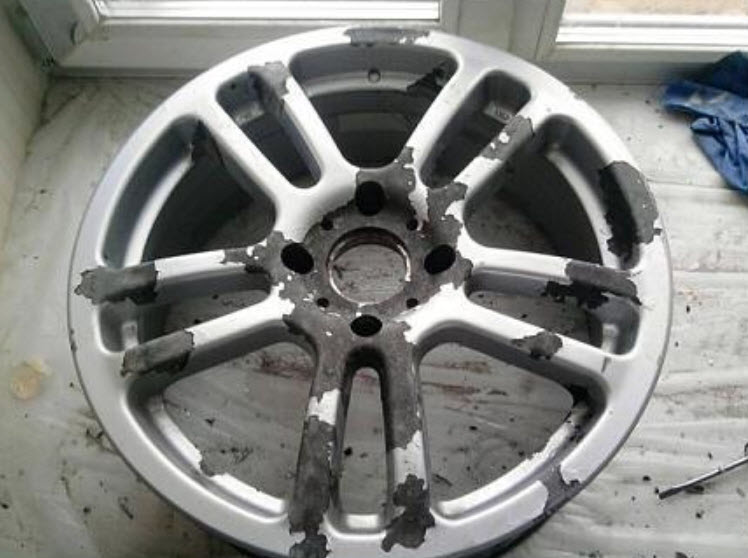
All this does not exclude the use of your favorite cast or forged wheels in winter, but it is worth remembering that you will have to pay extra for beauty.
Much less if moderation and accuracy are observed when driving, and if the car uses large-diameter wheels along the rim, then there will be no choice, large disks in the steel version are simply not produced.
Storage nuances
Store rubber on rims in the same way as removed tires. The difference is only in the absence of transverse deformations, that is, it is possible to stack several wheels in a horizontal position.
You can not completely lose pressure in the tires. There is no need to maintain the rating, but the rubber is less deformed when the wheels are pumped up. This also contributes to the preservation of sealing joints between the tire beads and the disc surface.
The main enemy during storage is humidity. The lower it is in the room, the better. This is also due to temperature fluctuations, when it is possible to reach the dew point and drop water.
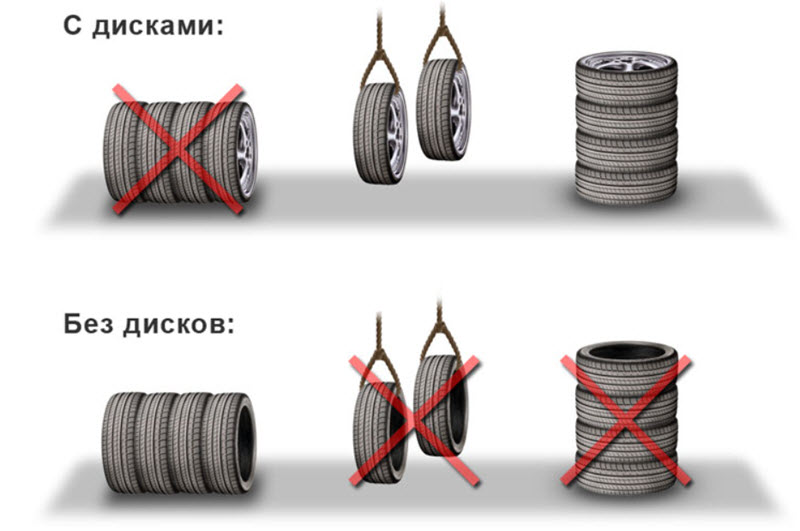
Before sending the wheels for seasonal storage, you should check the condition of the paintwork, and if it is broken, immediately update it in accordance with the repair technology. That is, not just tint, but with cleaning, degreasing, priming and varnishing.
The remaining traces of rust will actively catalyze the further process. The most radical solution is sandblasting before full repainting. Other methods, including chemical cleaners and rust converters, are extremely unreliable.
